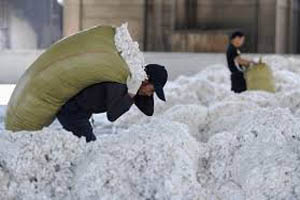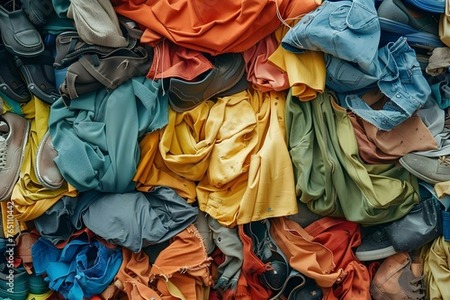
China cotton stocks may end the season smaller than expected
YarnsandFibers News Bureau 2014-12-05 11:00:00 – USAThe US Department of Agriculture bureau in Beijing pegged at 58.0m bales (12.64m tonnes) China's inventories at the close of 2014-15 – more than 4m bales below the department's official forecast.
China's cotton inventories in August were equivalent to about 60% of the world total, may end the season smaller than had been thought due to the impact of subsidy reforms which may keep down the country's production long-term.
While still representing a huge proportion of world inventories, which the USDA estimates ending the season at 107.4m bales, the bureau's forecasts factor in a fall in China's stockpile of more than 1.5m bales in 2014-15, the biggest decline in four years.
The stocks-to-use ratio, a key pricing metric, would drop by 25 points to 151% - an elevated number, but below the 166% the USDA itself foresees.
The bureau's estimates factor in an expectation of reforms to Chinese farm subsidies will lead to a more market-friendly cotton price, compared with the artificially high cotton price encouraged by the previous regime, which offered farmers a guaranteed minimum value.
The old regime's guaranteed price was well above international market rates, meaning the scheme encouraged huge growth in state stockpiles, besides supporting cotton values in the domestic market at high levels, and spurring mills to ramp up imports.
However, there already appear signs of the reformed system encouraging consumption of domestic cotton, with Chinese yarn production believed up 8% in the first nine months of the year, while yarn imports in the July-to-September quarter were, at 453,000 tonnes, down 21%.
In fact, the bureau estimated Chinese cotton consumption in 2014-15 at a four-year high of 38.35m bales, above the USDA's official estimate of 37.5m bales.
This reflected increased textile and clothing demand both in the domestic market and in Chinese export markets such as the European Union and US, where consumption is expected to recover moderately in response to the recovering economic environment.
Furthermore, weaker cotton prices will boost its competitiveness compared with synthetic fibres such as polyester.
According to Industry experts, the share of synthetic fibres and other fibres in cotton yarn production may fall moderately in the second half of 2014 due to the declining domestic cotton price. This will also encourage more domestic cotton consumption.
The bureau failed to offer cotton bulls the satisfaction of an increased estimate for China's cotton imports, a highly market-sensitive figure, in being the world's biggest.
It stuck by the USDA estimate of 7.0m bales, down one-half year on year, and the lowest since 2008-09, during the depths of the world financial crisis.
However, the bureau flagged the potential for the new cotton subsidy regime which offers growers in the major growing state of Xinjiang a varying payout if cotton prices fall below 19,800 yuan a tonne, and a flat payout of up to 2,000 yuan a tonne in other provinces – to stem Chinese cotton output ahead.
In Xinjiang, in the long run if only the cotton that is planted in approved land can be included in the original planting survey and entitled to receive the subsidy, the practice of planting cotton on unreported or unapproved land will likely decline.
In other provinces, cotton area is expected to fall as the government's subsidy of 2,000 a tonne maximum will render cotton less competitive than other crops.
China has been the world's top cotton producer, but this year although the harvest estimated by the USDA at 30m bales, it looks like losing that title to India.
Market Intelligence
Ask for free sample Report

experience
Customer Base
dedicated team
Countries Served Worldwide









